

Damion Smy
Boxy new KGM Musso unveiled to take on HiLux and Ranger ahead of Australian launch
8 Hours Ago
Maybe you don't want to follow the SUV crowd and love the idea of a people-mover. Korea's two main car brands have related offerings that look very different.

Senior Contributor
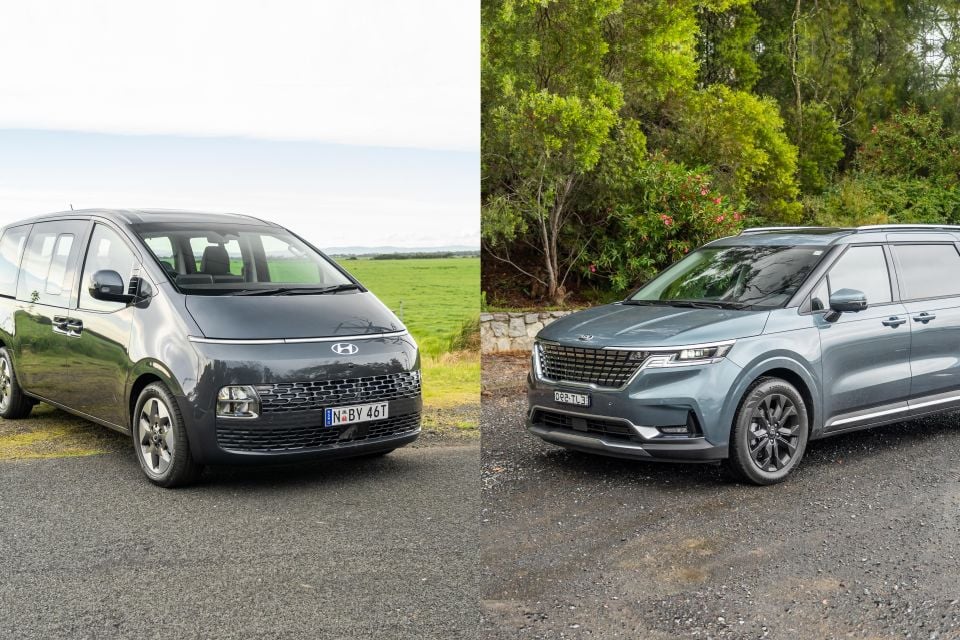

Senior Contributor
The majority of bigger families opt for large SUVs, but there’s still a market for the humble people-mover.
As there should be, because you’d be smart to go down this path. These are vehicles designed with practicality as considerations one, two and three.
Two of the newest and best are the space-age van-like Hyundai Staria and the sleeker and crossover-styled Kia Carnival.
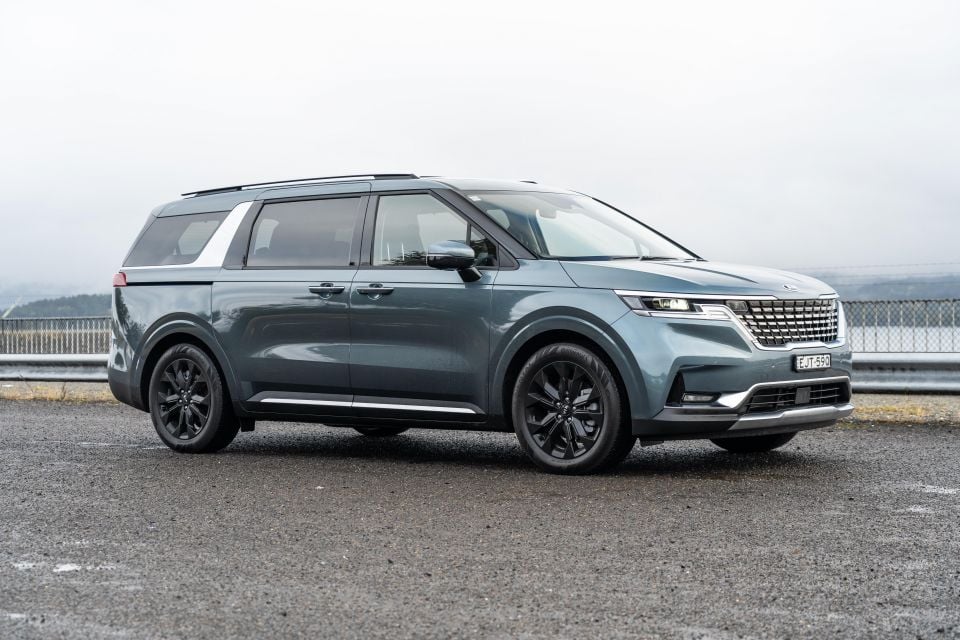
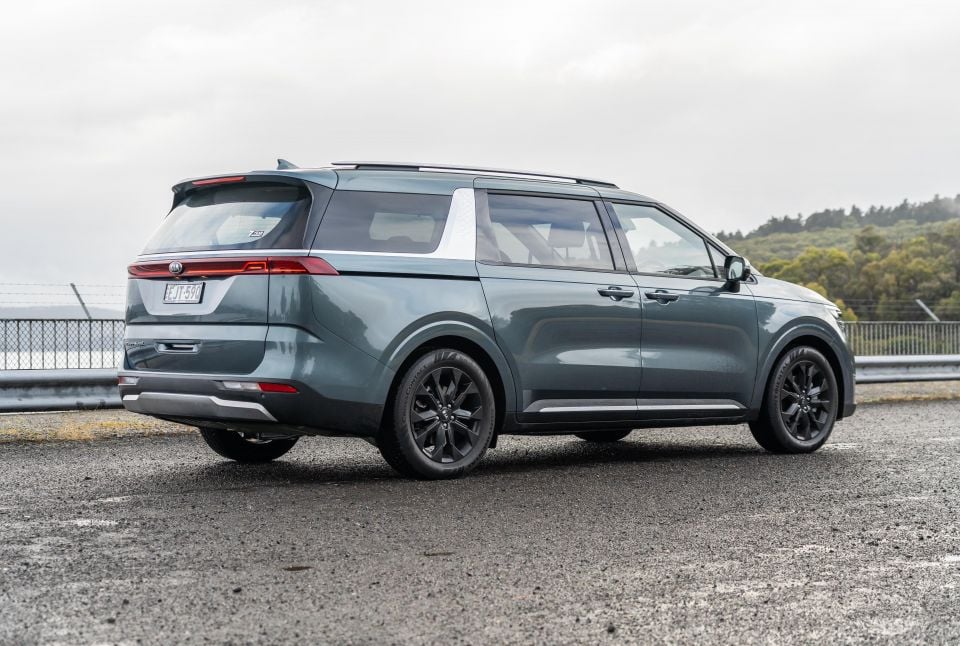
This pair share a heck of a lot under the skin, but outside they could scarcely be more different.
In the interest of giving consumers some digestible facts, this is a specs-based comparison of the two. We’ve honed in on the flagship variants in particular.
You’ll also note that we draw on our previous reviews of both, and have embedded a few of our videos with relevant time stamps to the section discussed, to really enhance the experience.


The Hyundai Staria is available in three specification levels, and the Kia Carnival has four trim levels to choose from.
The prices listed are before on-road costs such as state taxes and dealer delivery, known as the manufacturer list price.
Hyundai Staria
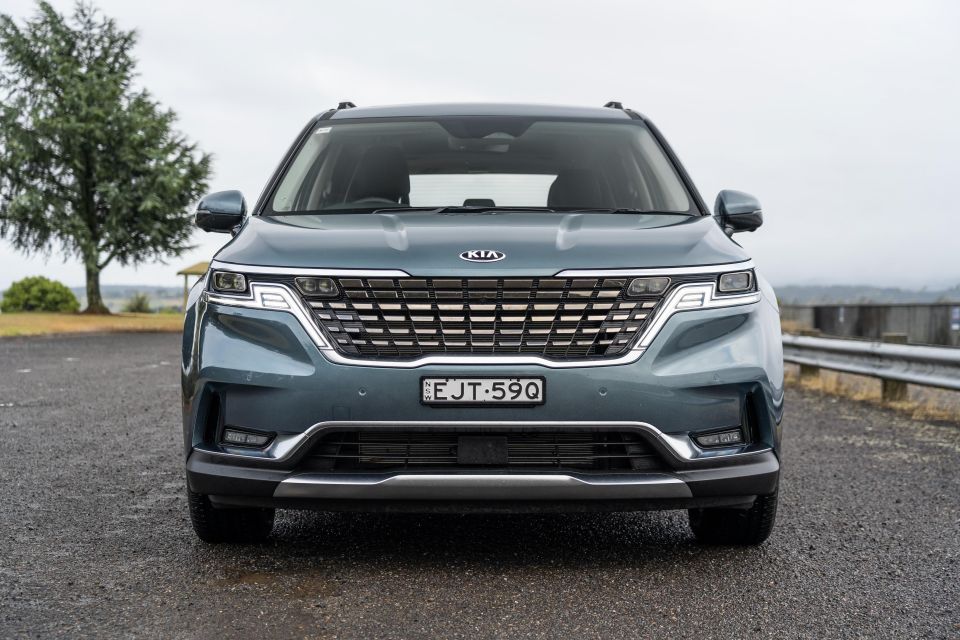
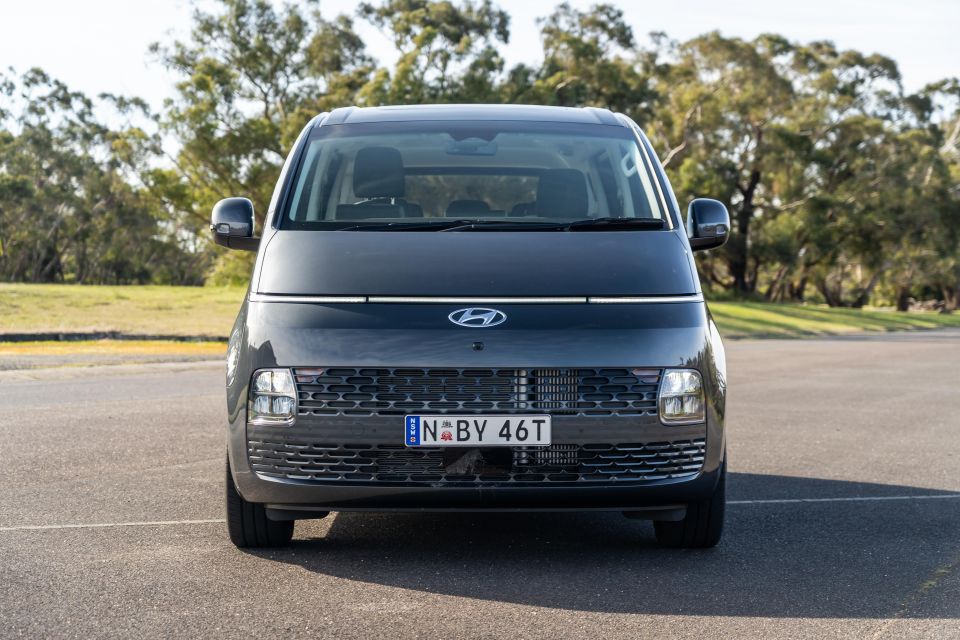
Kia Carnival
There’s symmetry between the Staria base/Carnival S, Staria Elite/Carnival SLi, and Staria Highlander/Carnival Platinum. The Carnival Si doesn’t have a direct price rival in the Hyundai range, really.
Side note: The Hyundai’s diesel is more expensive than the Kia’s because it also comes with all-wheel drive.
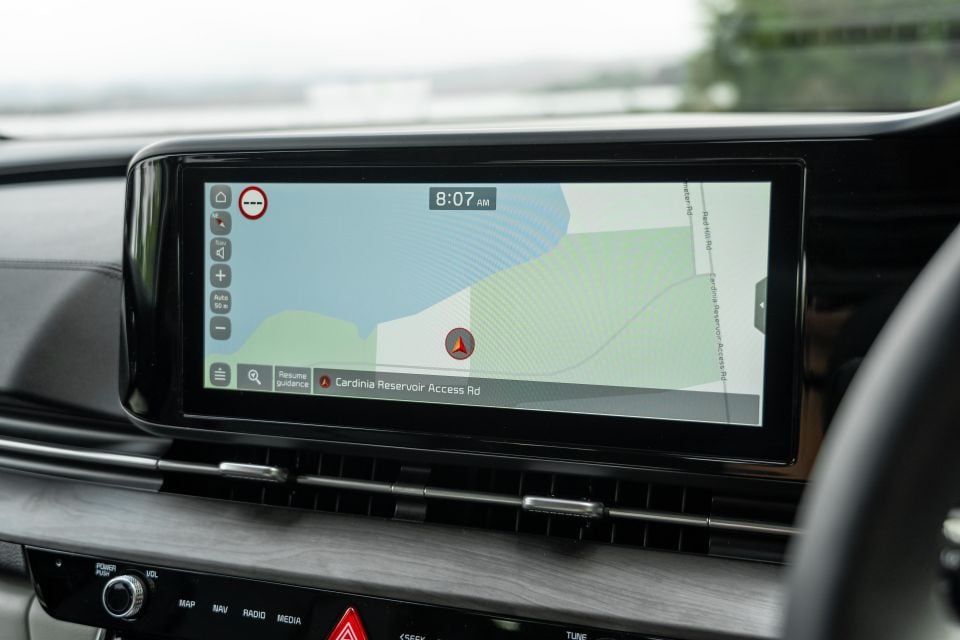
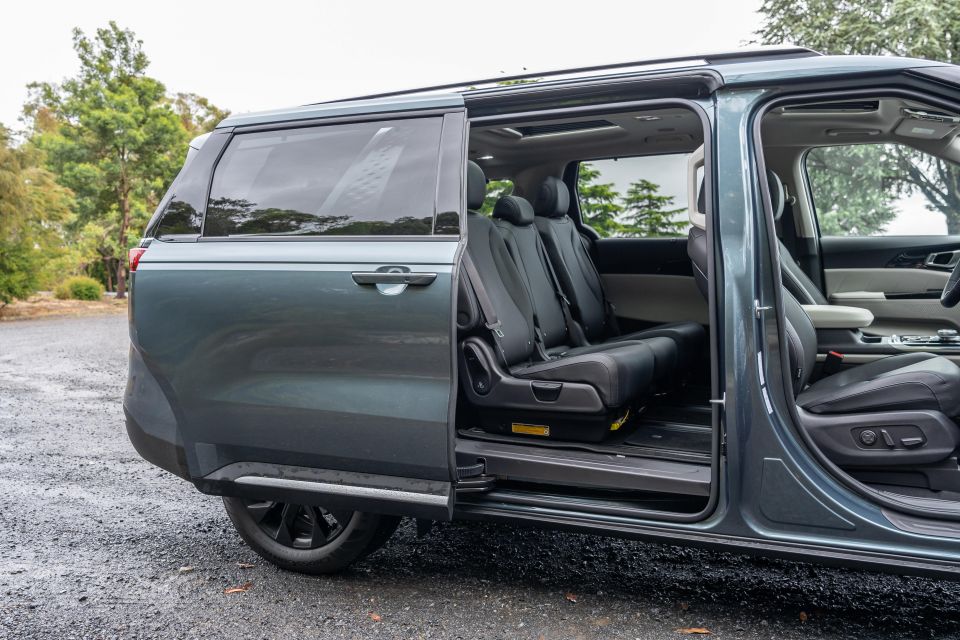

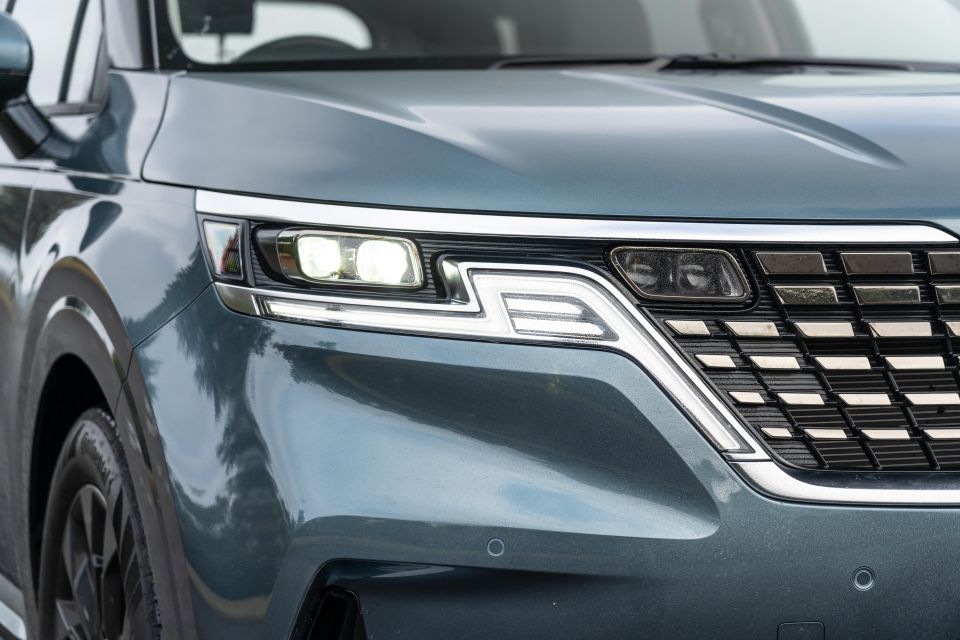
We will narrow the features lists down to the range-toppers: the Hyundai Staria Highlander ($63,500 – $66,500) versus the Kia Carnival Platinum ($64,980 – $66,980).
The lower grades are mechanically the same, they simply come with fewer luxury features so your best bet is to define your non-negotiables and find the cheapest variant that covers all your particular bases.
The top-of-the-range variants are hard to go past, and if you want to spoil the kids or wow your customers then these variants will do the job.
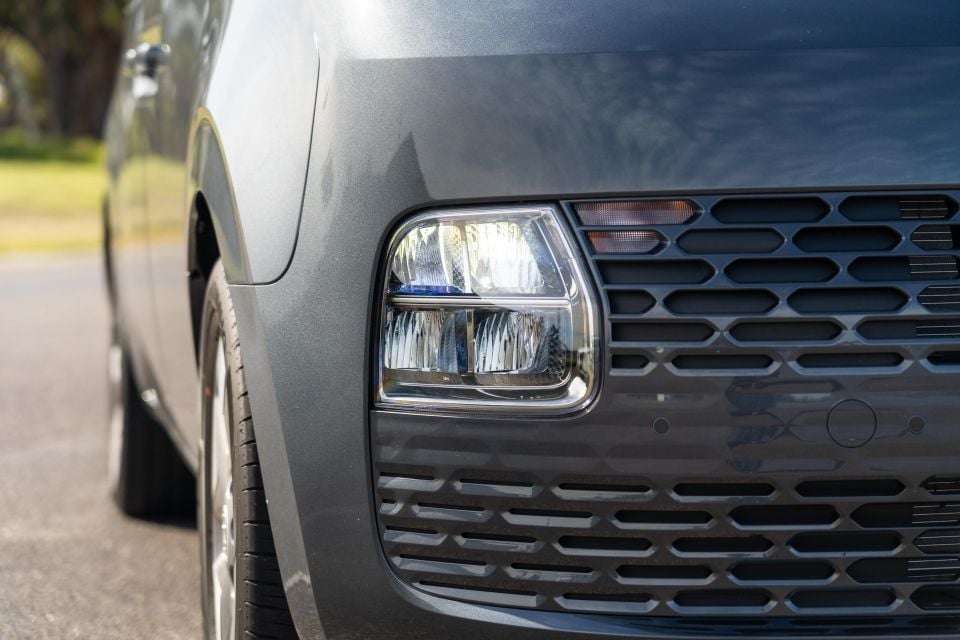

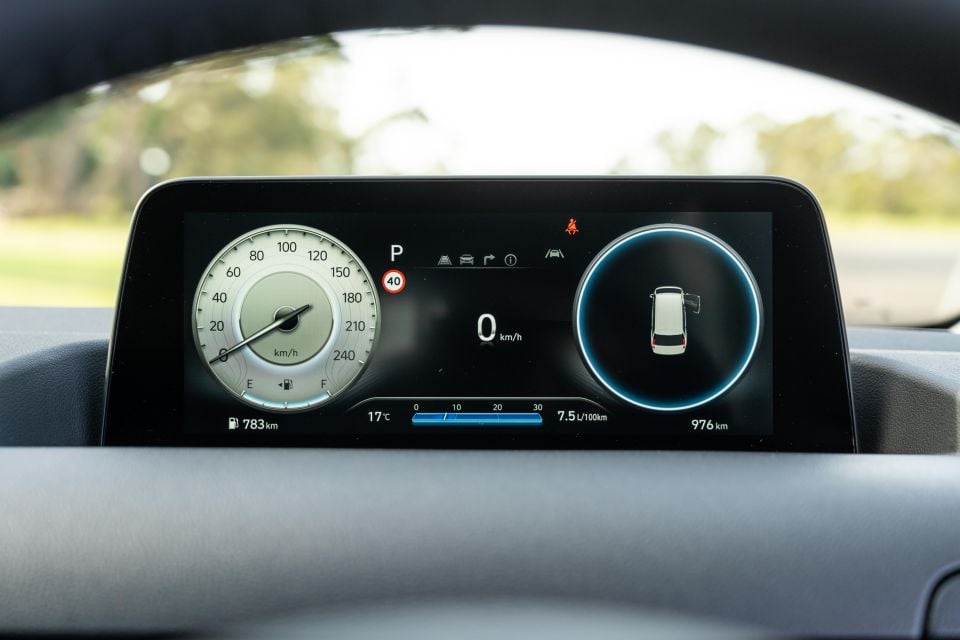
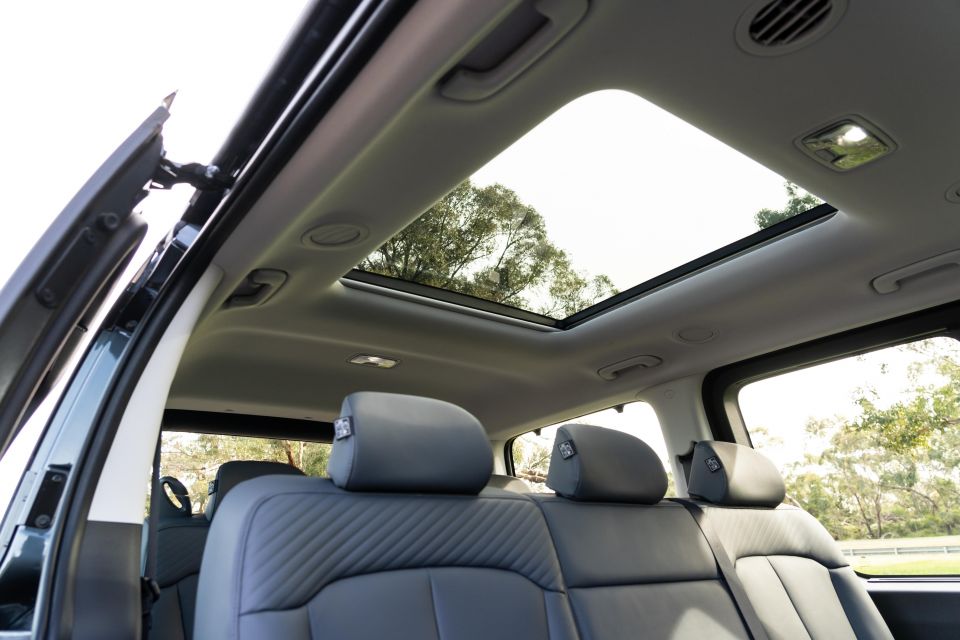
Shared features at the top level include proximity key access, remote start function, powered side doors and tailgate, a dual-panel sunroof, leather seats with heating and ventilation up front, and front- and back-row climate control.
Both additionally come with satellite-navigation, live traffic updates, digital radio, Apple CarPlay, Android Auto, two Bluetooth connections, USB points in all seat rows, LED interior lighting, and window blinds.
But the Kia adds extras such as 19-inch alloy wheels, projector LED headlights, heated back seats, a bigger 12.3-inch touchscreen, and a superior 12-speaker Bose sound system. On the other hand the Hyundai alone gets a useful full-sized spare tyre.
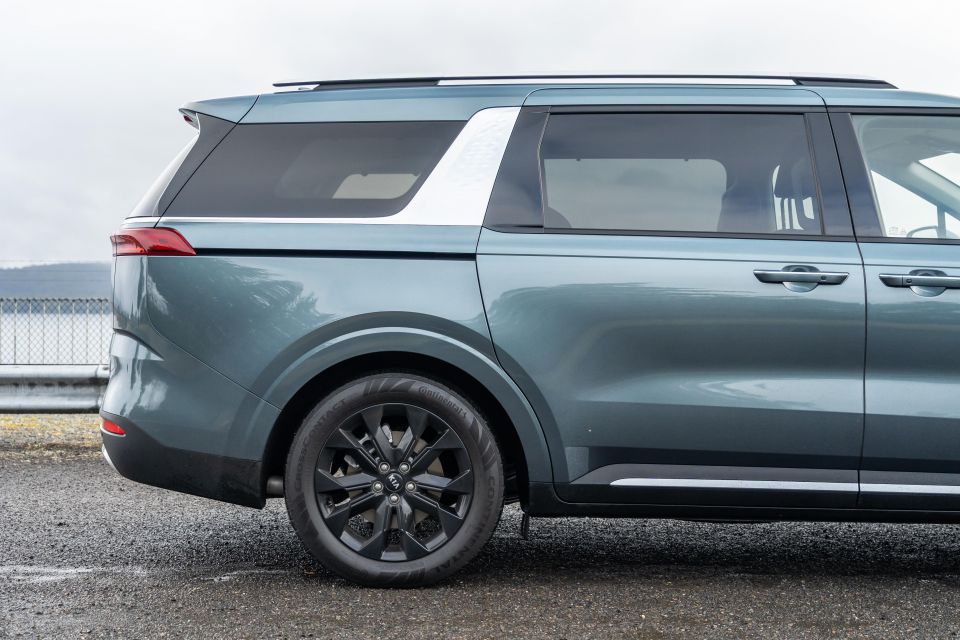

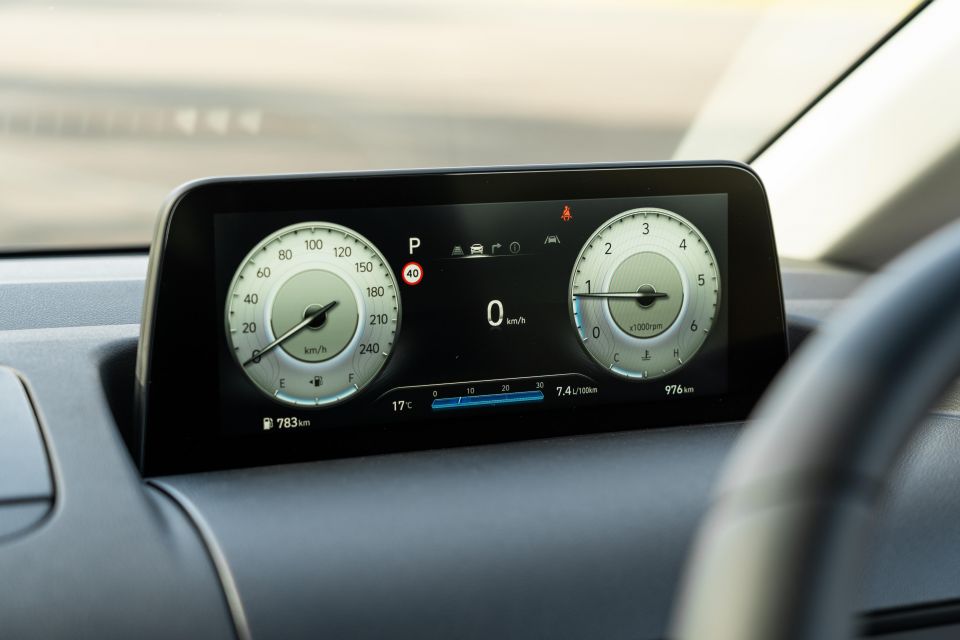
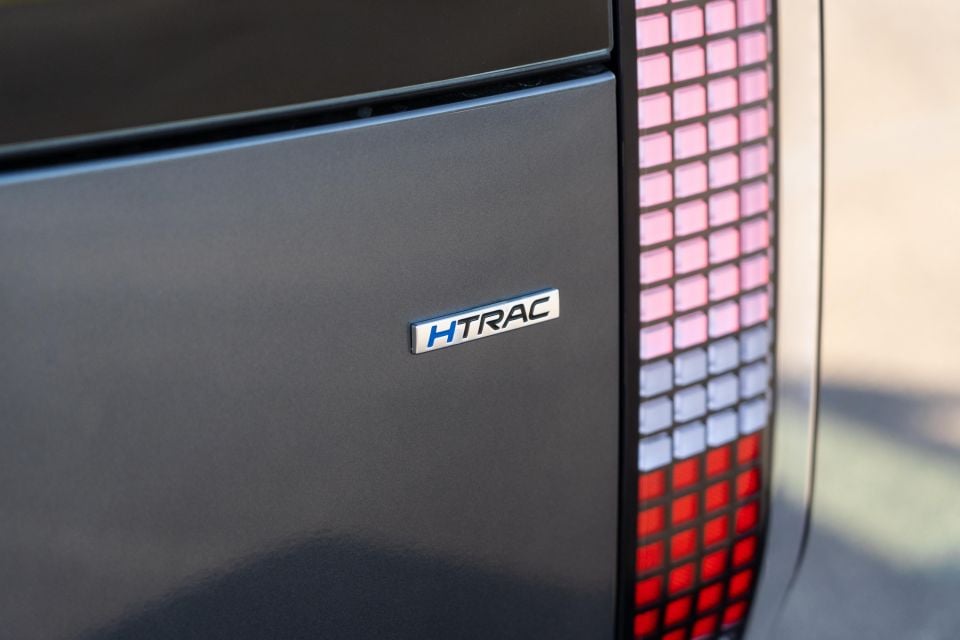
| Staria Highlander | Carnival Platinum | |
|---|---|---|
| Wheels | 18-inch alloy | 19-inch alloy |
| Spare | Full-size | Temporary |
| Headlights | LED reflector, dusk-sensing | LED projector, dusk-sensing |
| Proximity key | Standard | Standard |
| Starting process | Button, remote-by-key | Button, remote-by-key |
| Sliding side doors | Powered | Powered |
| Tailgate | Powered | Powered |
| Parking sensors | Front and rear | Front and rear |
| Sunroof | Dual panel | Dual panel |
| Seats | Leather | Leather |
| Seat temps | Front heated and cooled | Front heated and cooled, some rears heated |
| Air-con type | Climate control front & rear controls | Climate control front & rear controls |
| Touchscreen | 10.25-inch | 12.3-inch |
| Satellite navigation | Live traffic | Live traffic |
| Apple/Android | Standard | Standard |
| Digital radio | Standard | Standard |
| Audio system | 6 speakers | 12-speaker Bose |
| USB points | All three rows | All three rows |
| Bluetooth connections | 2 | 2 |
| Wireless charger | Standard | Standard |
| Cup/bottle holders | 16 | 13 |
| Cabin lighting | LED | LED |
| Window blinds | Standard | Standard |
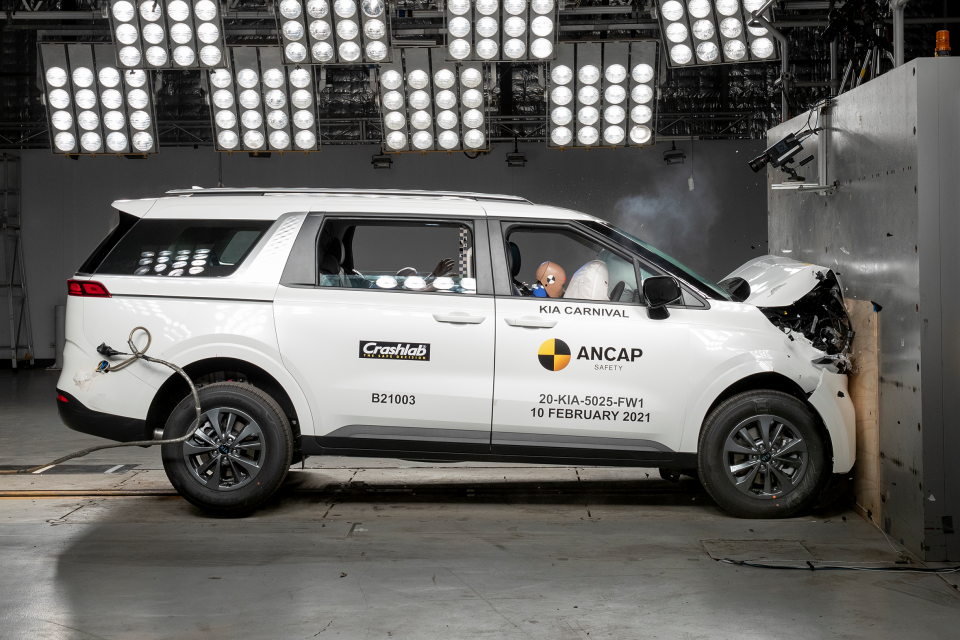
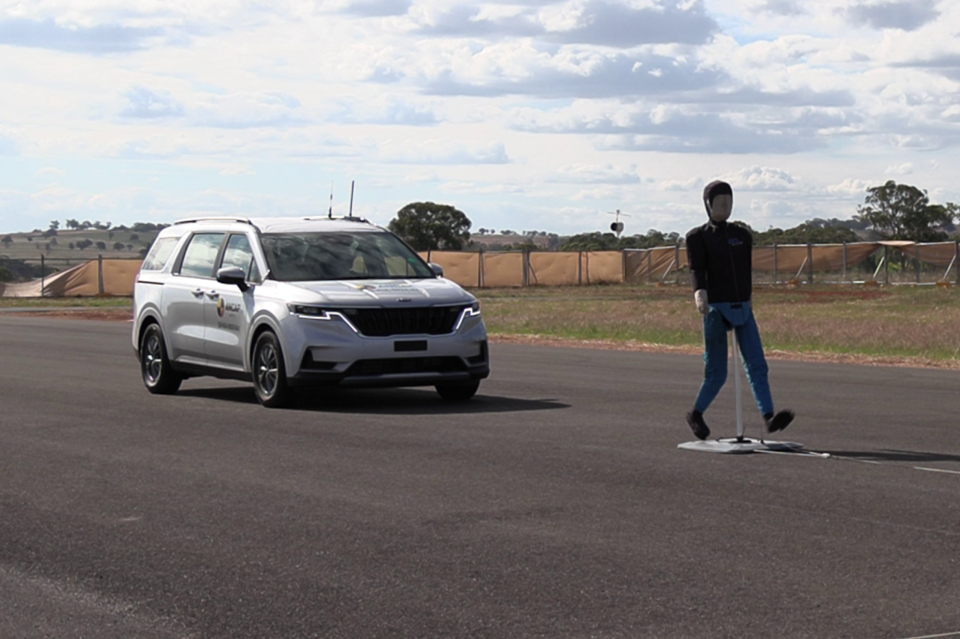
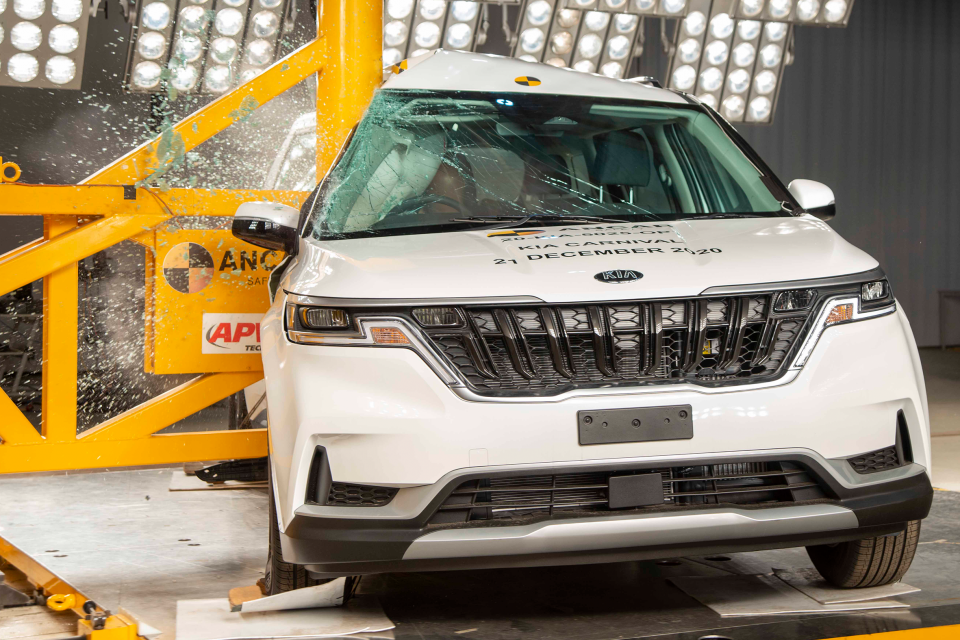
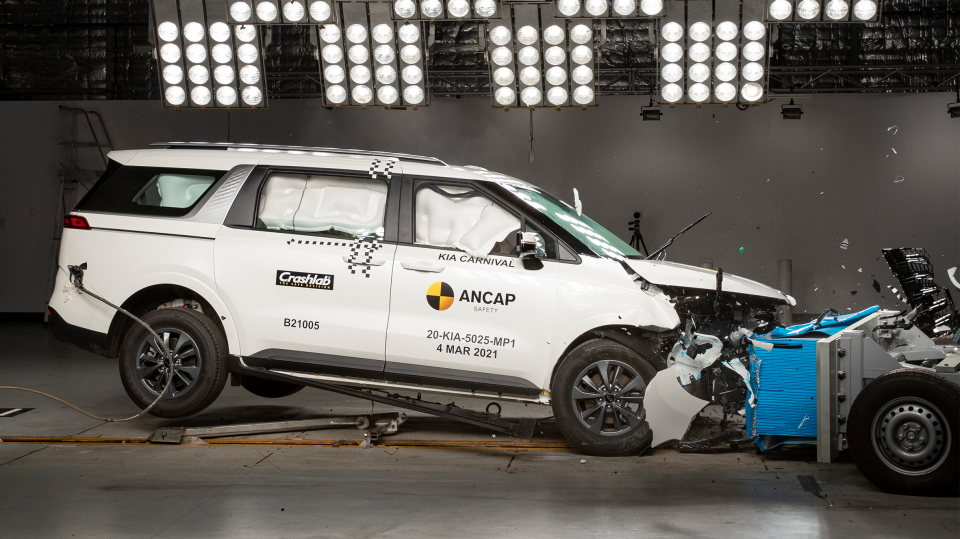
It goes without saying that safety in a people-carrier is paramount.
Both have dual front-occupant airbags, dual front-occupant thorax airbags, and side head-protecting curtain airbags that are advertised as covering all rows.
The Kia has a driver’s knee airbag unlike the Hyundai, but the Hyundai has a front-centre airbag unlike the Kia.
The Hyundai offers ISOFIX and top-tether child-seat attachments in row two, whereas the Kia has these attachments in rows two and three.
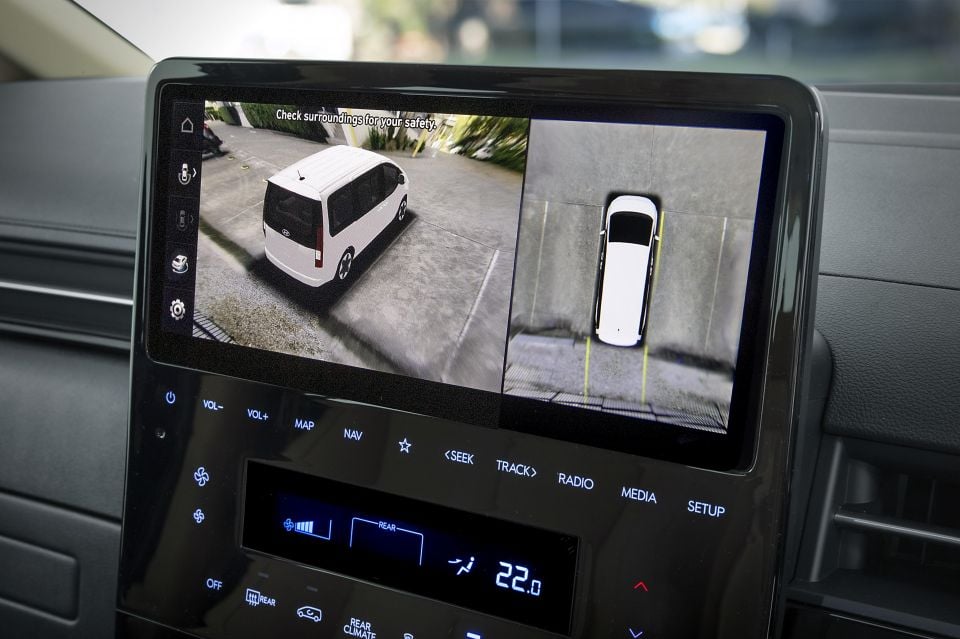
In terms of active safety and driver-assist features both come with all the key features available at the minute.
This means autonomous emergency braking for cars, vulnerable road users and junctions; active lane-keeping assist, active blind-spot intervention, active rear cross-traffic avoidance, safe exit assist, a 360-degree camera, and active cruise control.
The Staria is yet to be crash-tested by ANCAP unfortunately. On the other hand the Carnival carries a 2021 five-star rating.
While the Kia offers more features for the same price, the Hyundai offers more metal for the money.
It’s 98mm longer and 215mm taller, with the latter being an obvious headroom gain. The Staria is also 183mm longer in the wheelbase.
Both ought to blow you away up front if you’re hopping out of a 10-year old Tarago.
Each has a large centre touchscreen running similar software, and novel shift-by-wire gear selector buttons or knobs.
The Kia has the more impressive centre display and a more driver-focused cabin with SUV-like driving position, whereas the Staria is a vast and airy experience and full digital instruments.
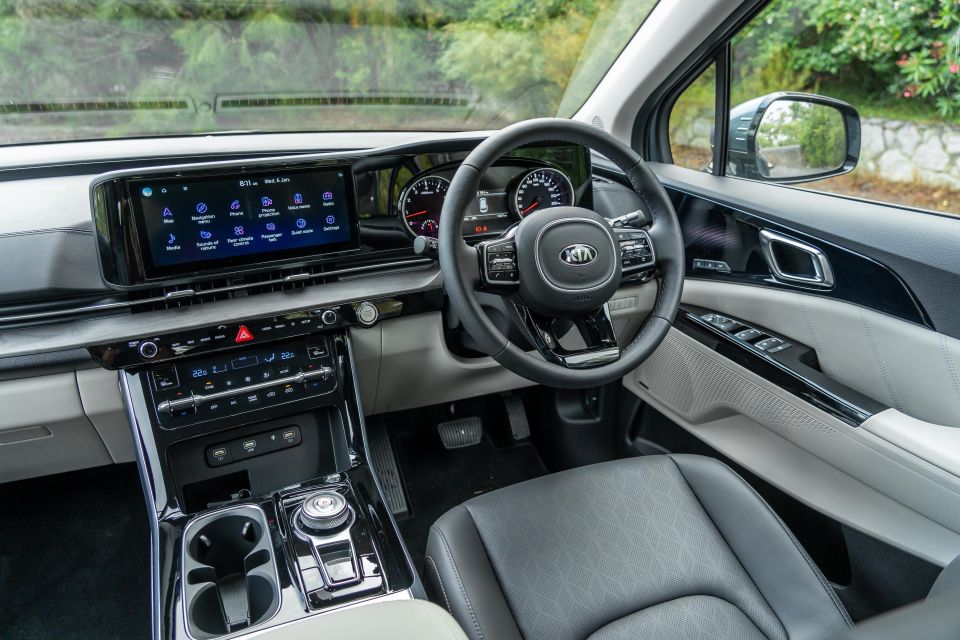

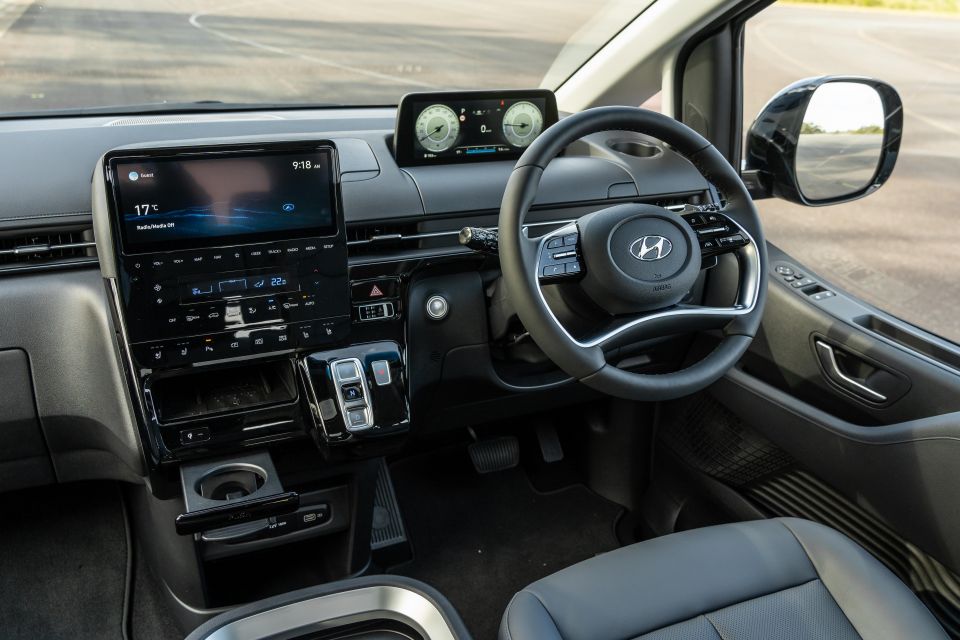
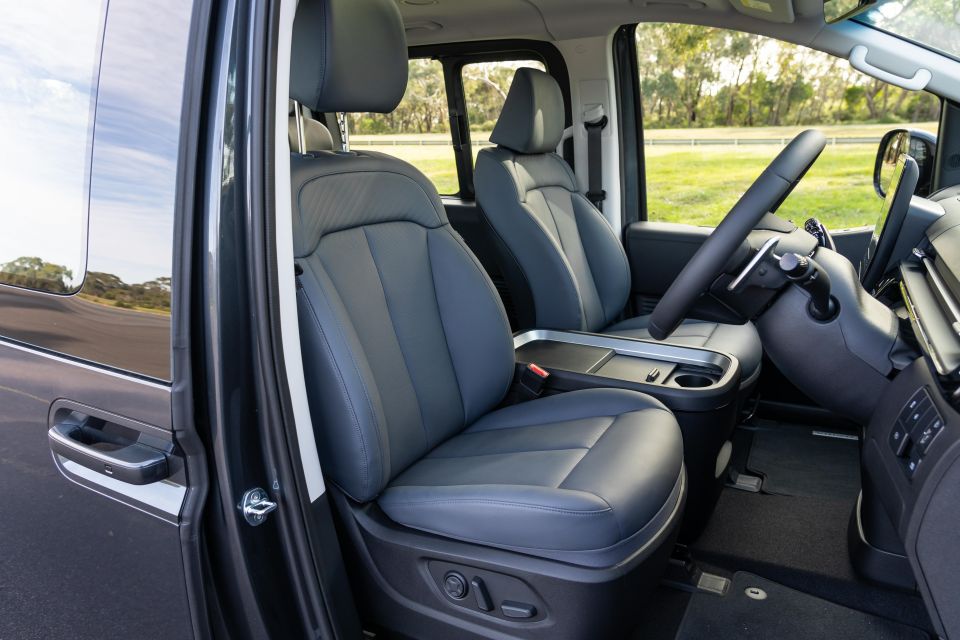
Both offer vast centre-row seats accessed by sliding doors, which themselves slide forward and tilt downwards (the Kia’s in three pieces, the Hyundai’s bench in two). There isn’t an SUV on the market with better third, fourth and fifth seats.
Both have adult-friendly three-seat rearmost benches. The Kia’s is the only one that split-folds, but the Hyundai’s high roof and massive windows give it an edge when it comes to spaciousness and ease of ingress/egress.
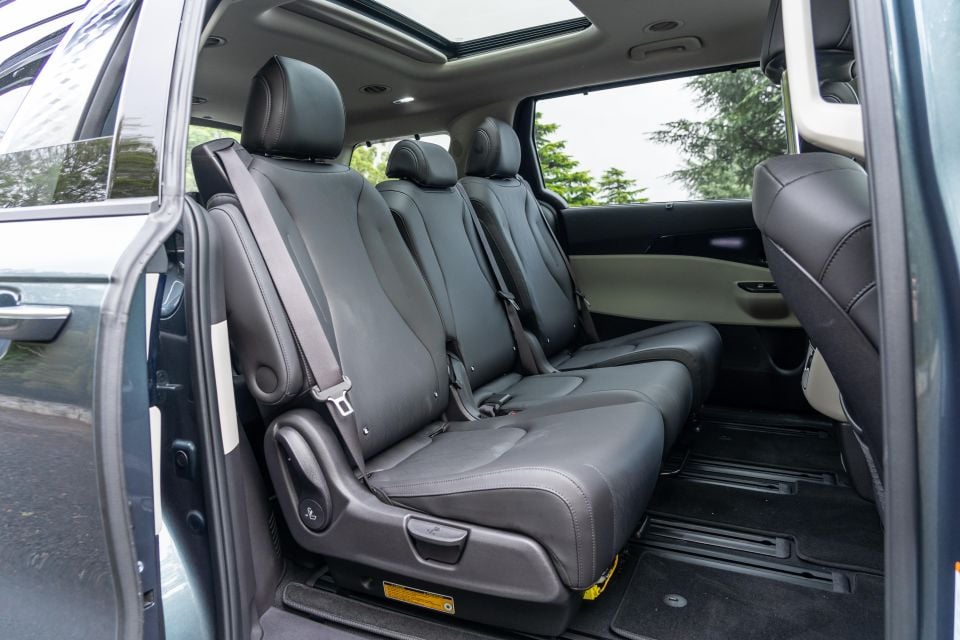
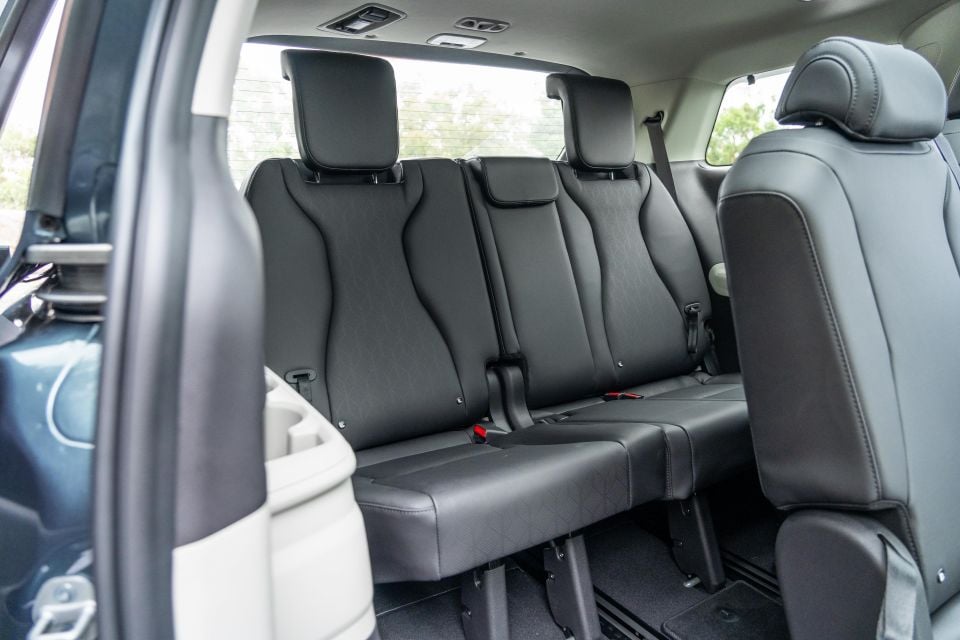
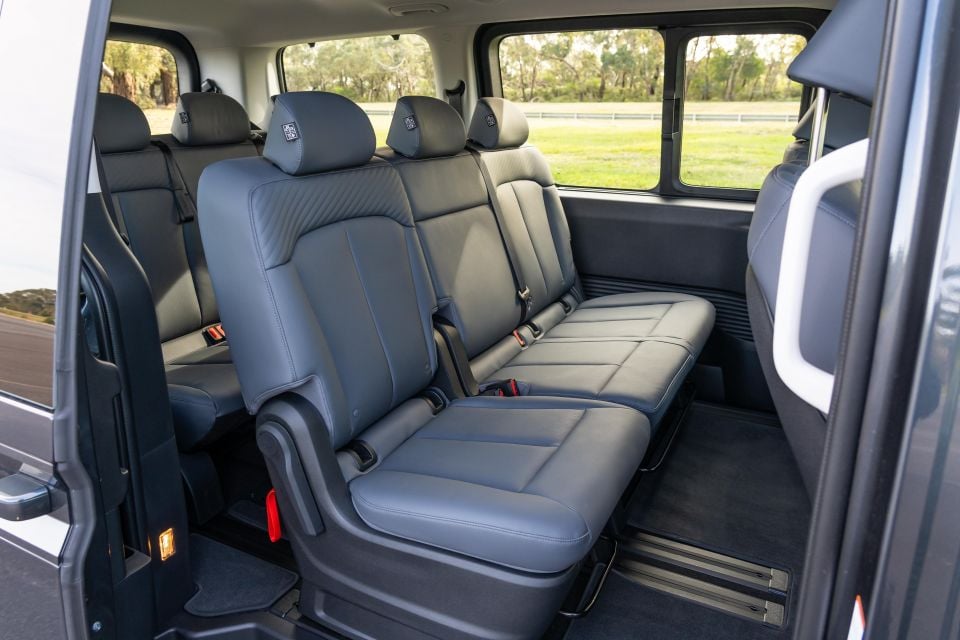
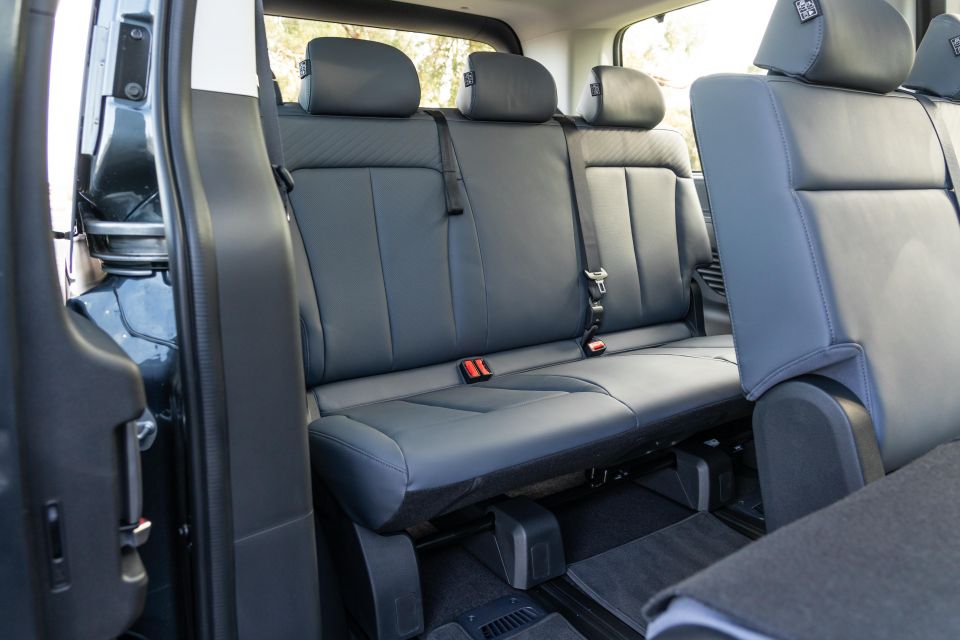
Both offer third-row seats that can be moved out of the way (the Kia’s fold down, the Hyundai’s) to free up more space. With all seats in use the Staria’s 831L boot betters the Carnival’s 627L.
For more detailed breakdowns of the respective interiors, if you’re interested, we strongly recommend you check out our reviews here:
MORE: 2022 Hyundai Staria review MORE: 2021 Kia Carnival review
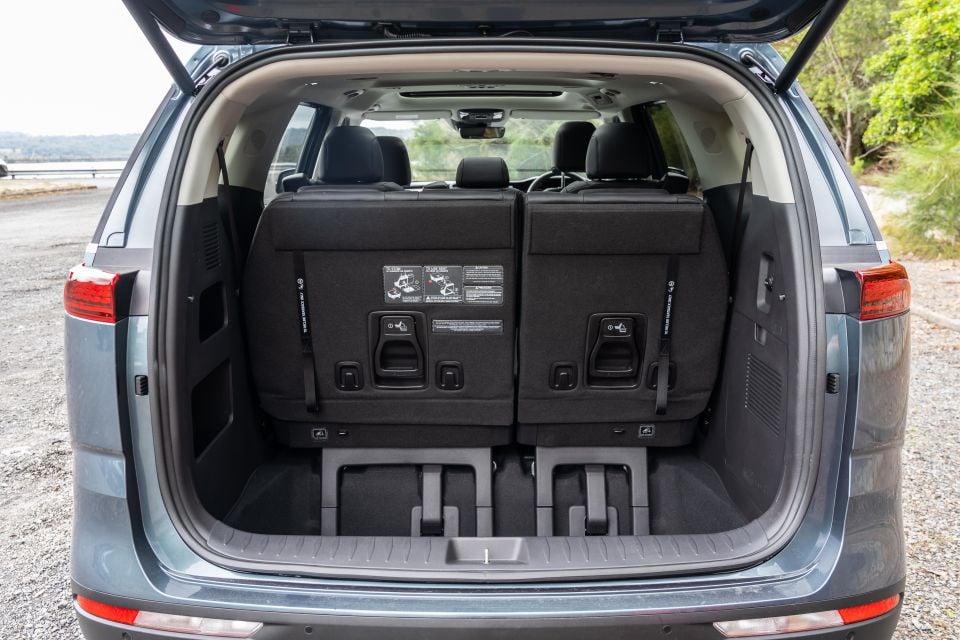

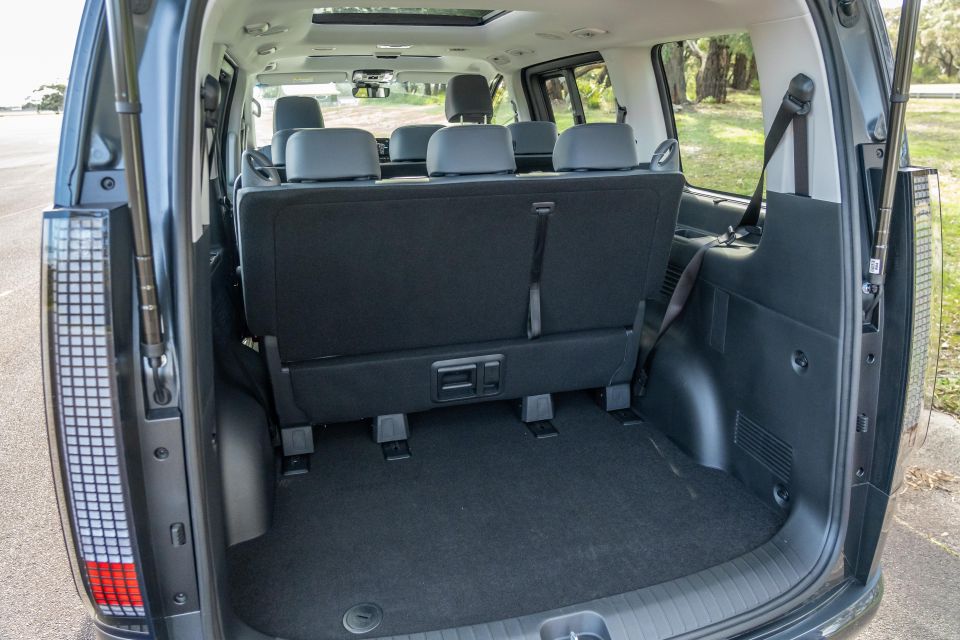
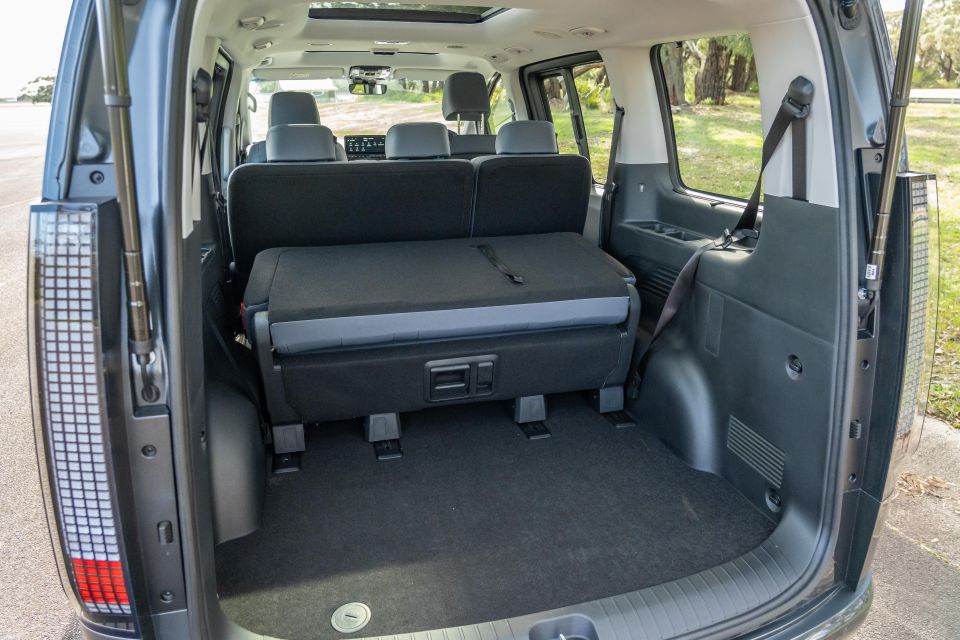
| Hyundai Staria | Kia Carnival | |
|---|---|---|
| Length | 5253mm | 5155mm |
| Width | 1997mm | 1995mm |
| Height | 1990mm | 1775mm |
| Wheelbase | 3273mm | 3090mm |
| Clearance | 186mm | 172mm |
| Boot size VDA: | ||
| Behind 3rd row | 831 litres | 627 litres |

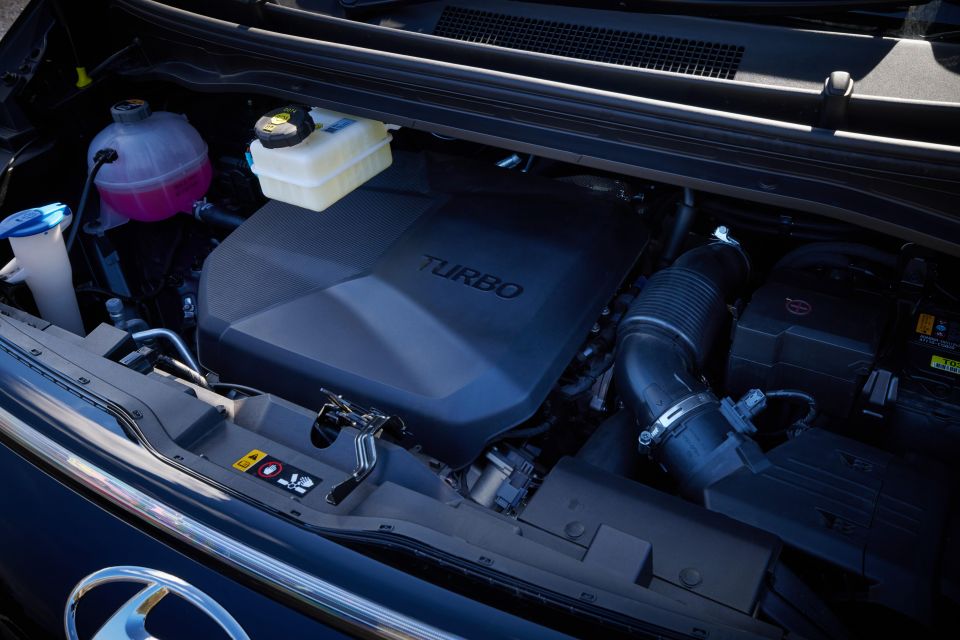
Both come with petrol and diesel engine choices, the former being cheaper, more responsive and a little smoother, but the latter more fuel-efficient. The Hyundai diesel has an additional party trick too…
Both models’ petrol engines are a 3.5-litre V6, though as the table below shows the Kia’s makes an extra 16kW of power and 24Nm of torque, and uses a smidgen less fuel – though neither are miserly. The Hyundai is bluffer and a bit heavier.
Both are front-wheel drive and use an eight-speed automatic transmission. The Hyundai’s 2500kg towing capacity is 500kg greater than the Kia’s but if you need to pull trailers you really should get the diesel.
| Hyundai Staria | Kia Carnival | |
|---|---|---|
| Engine | 3.5-litre V6 petrol | 3.5-litre V6 petrol |
| Power | 200kW @ 6400rpm | 216kW @ 6400rpm |
| Torque | 331Nm @ 5000rpm | 355Nm @ 5000rpm |
| Driven wheels | Front-wheel drive | Front-wheel drive |
| Transmission | 8-speed automatic | 8-speed automatic |
| Fuel cons. | 10.5L/100km | 9.6L/100km |
| Emissions | 239g/km Euro 5 | 220g/km Euro 5 |
| Fuel tank | 75 litres | 72 litres |
| Towing capacity | 2500kg | 2000kg |
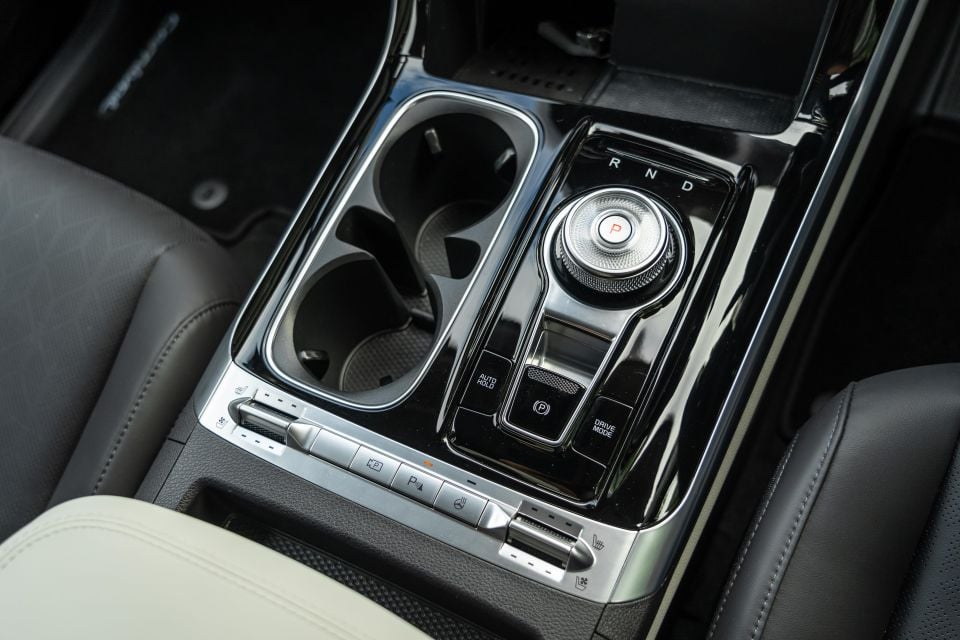
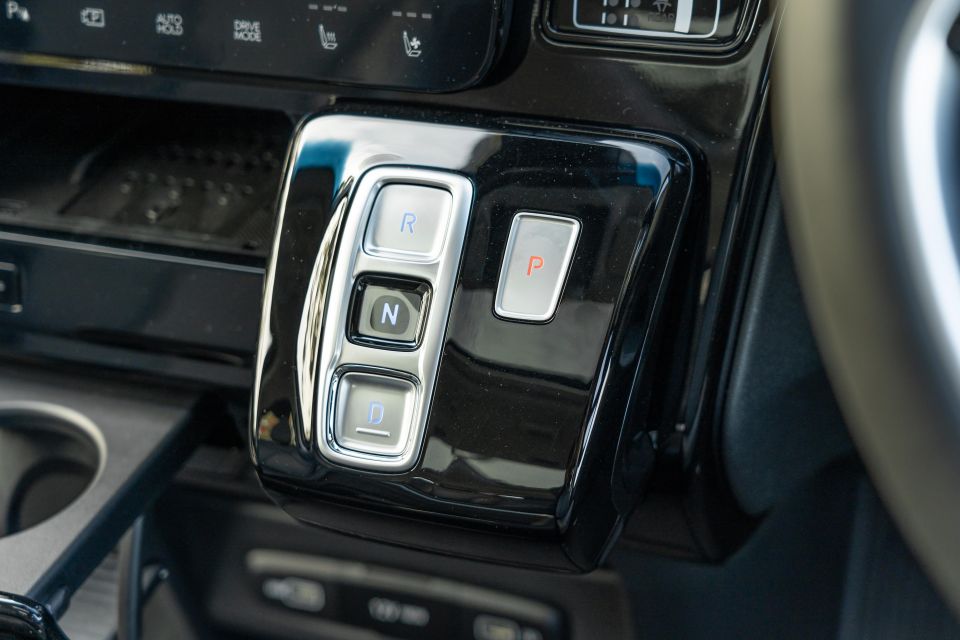
Where expert car reviews meet expert car buying – CarExpert gives you trusted advice, personalised service and real savings on your next new car.
Both the Hyundai Staria and Kia Carnival use a 2.2-litre four-cylinder diesel engine, though once again as the table below shows the Kia’s version has higher outputs – an extra 18kW and 10Nm to be precise.
Note the fact the diesel’s higher torque output (meaning pulling power) also kicks in much earlier than the petrol, and note also the superior combined-cycle fuel efficiency in lab tests – that sleeker Kia is particularly frugal.
Both again use eight-speed autos and the towing capacities are the same as the petrol models, though again the diesels are better suited to the job.
The Hyundai’s party trick is that it alone has all-wheel drive with its diesel engine, with a centre locking mode no less. There’s no low-range or anything and not much clearance, but for slippery surfaces it’s compelling.
The downside is a further fuel-economy impost.
| Hyundai Staria | Kia Carnival | |
|---|---|---|
| Engine | 2.2-litre 4-cylinder diesel | 2.2-litre 4-cylinder diesel |
| Power | 130kW @ 3800rpm | 148kW @ 3800rpm |
| Torque | 430Nm @ 1500rpm | 440Nm @ 1750rpm |
| Driven wheels | All-wheel drive | Front-wheel drive |
| Transmission | 8-speed automatic | 8-speed automatic |
| Fuel cons. | 8.2L/100km | 6.5L/100km |
| Emissions | 218g/km Euro 5 | 170g/km Euro 5 |
| Fuel tank | 75 litres | 72 litres |
| Towing capacity | 2500kg | 2000kg |
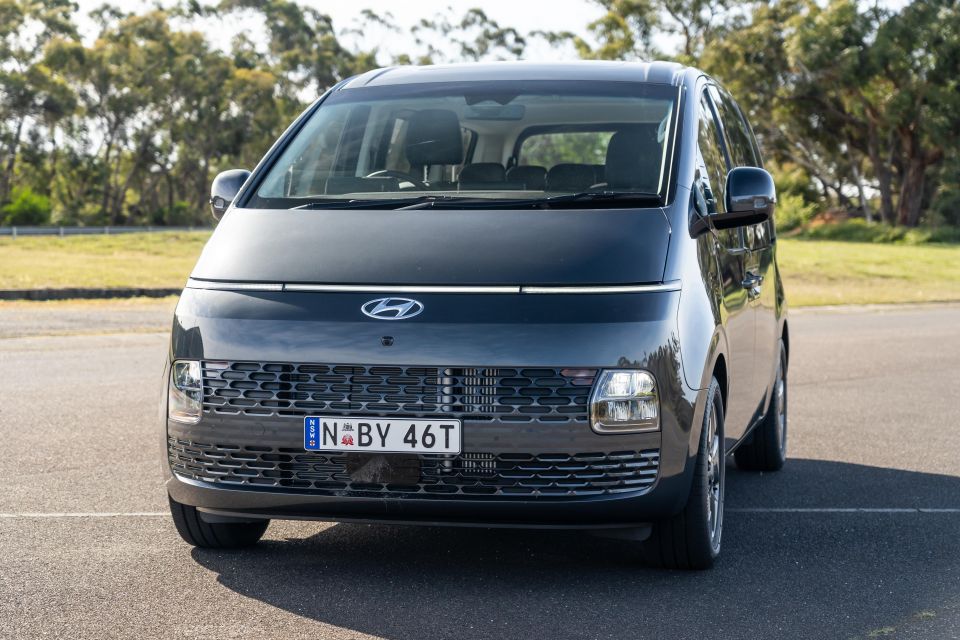
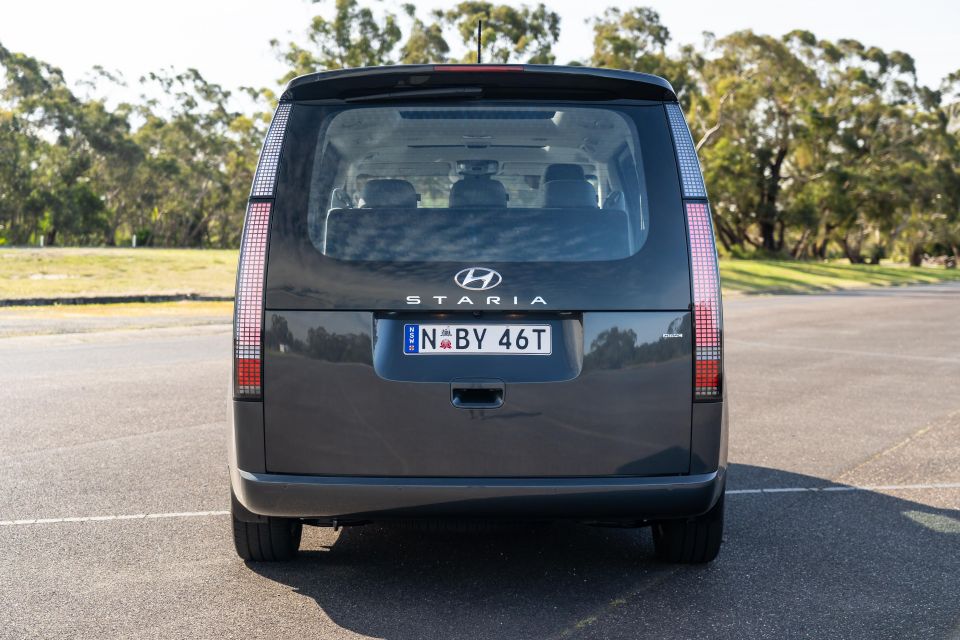

The tech specs as the table below shows are very similar. Both use independent all-round suspension and electric power steering, and have large dic brakes at both ends.
Don’t let the Staria Load van spinoff lull you into thinking this is antiquated under the skin.
The best ways to see us driving both and giving our thoughts are watching the detailed videos below.

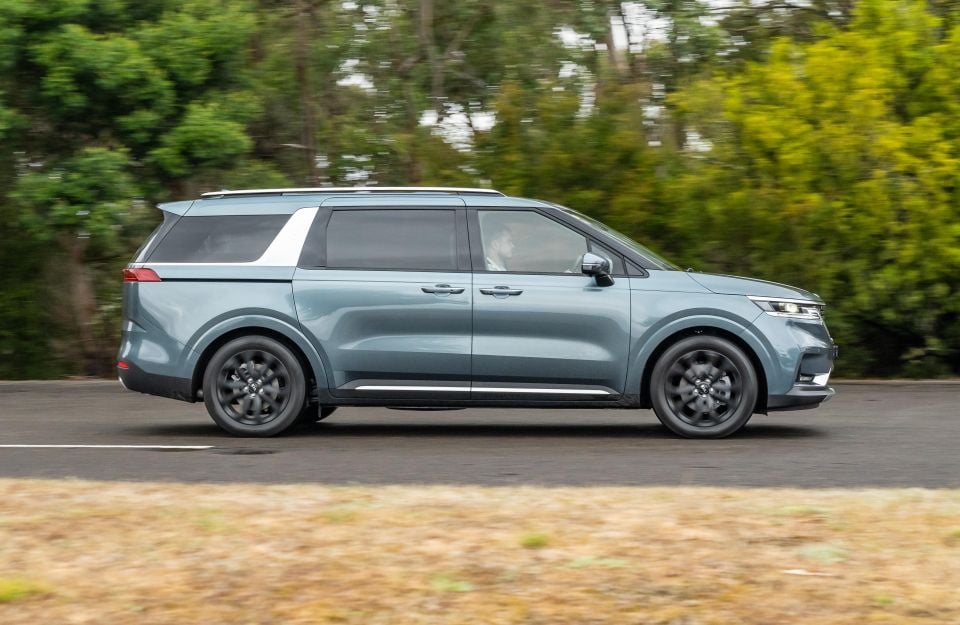

In short, the Staria is both heavier and has lower engine outputs so isn’t going to out-drag the Kia, which itself feels a little sportier (if there’s such a thing for an MPV) next to the Hyundai. Both are quite plush but the Kia is a touch firmer.
Both offer super-light electric steering that makes these two big buses feel more wieldy than they area.
We also noted that both are similarly guilty when it comes to letting wind and tyre noise into the interior more than they ought to.
| Hyundai Staria | Kia Carnival | |
|---|---|---|
| Kerb weight | 2212kg petrol | 2136kg petrol |
| 2325kg diesel | 2134kg diesel | |
| Gross vehicle mass | 2920kg petrol | 2880kg petrol |
| 3040kg diesel | 2876kg diesel | |
| Rough payload | 708 – 715kg | 744 – 752kg |
| Front suspension | MacPherson strut | MacPherson strut |
| Rear suspension | Multi-link | Multi-link |
| Front brakes | 345mm ventilated disc | 325mm ventilated disc |
| Rear brakes | 325mm ventilated disc | 325mm ventilated disc |
| Steering | Motor-driven | Motor-driven |
| Turning circle | 11.94m | 11.7m |
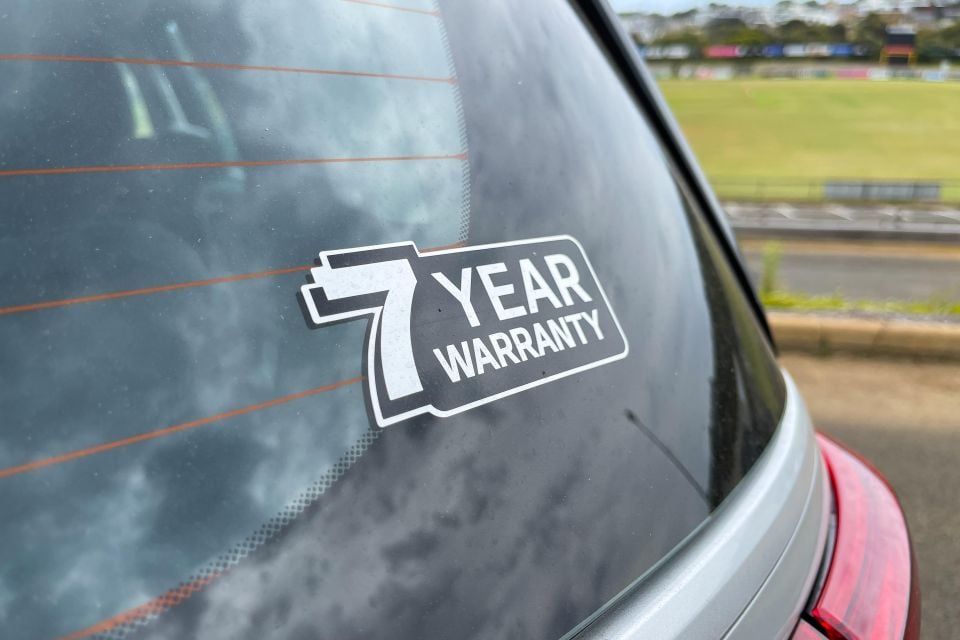
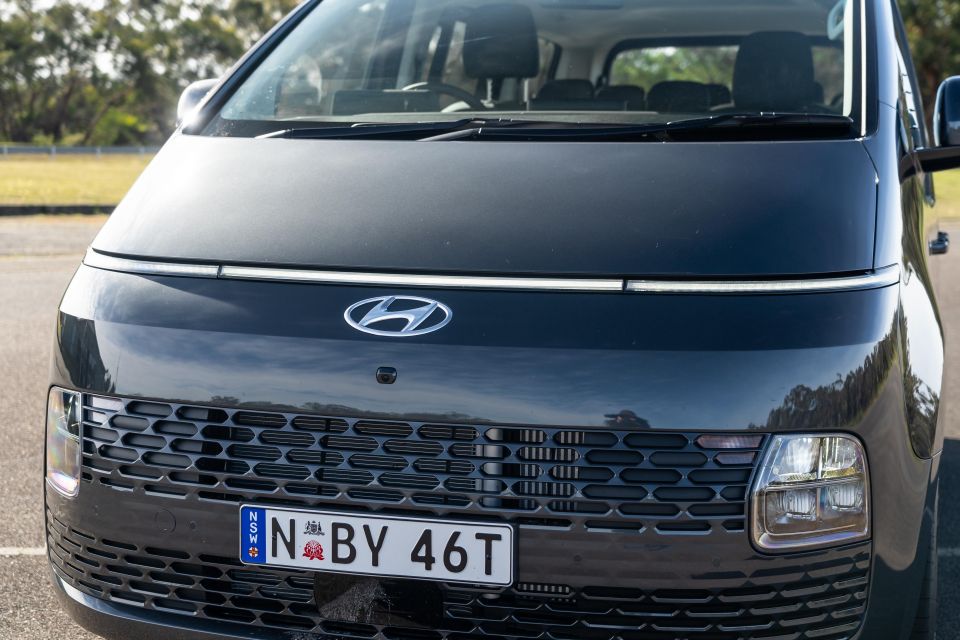
Hyundai’s five-year warranty falls two years short of Kia’s seven-year plan, both with unlimited kilometres.
Both Hyundai Staria engines have 12 month and 15,000km servicing intervals and average annual servicing costs averaging $360, though there are some additional charges along the way.
Both Kia Carnival engines likewise have 12 month and 15,000km servicing intervals, but respective average annual servicing costs from $492 (petrol) or $515 (diesel), though there are no mentions of additional charges.
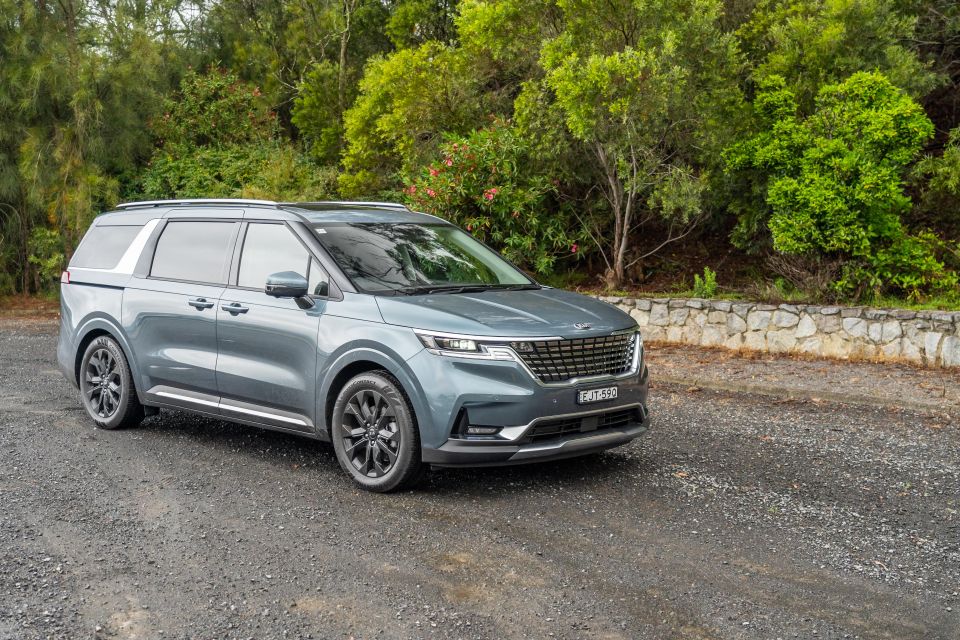

Our pick is, either seem better for big families than a Sorento or Santa Fe/Palisade SUV.
Ultimately it’s going to come down to balancing the Kia’s more SUV-like looks, extra features, better power-to-weight and longer warranty versus the space-age Hyundai’s airier and taller interior and available AWD.
Full videos here:
MORE: 2022 Hyundai Staria review MORE: 2021 Kia Carnival review
Share your thoughts with us in the comments below!
Share your thoughts and write a review of a car you own and get featured on CarExpert.


Damion Smy
8 Hours Ago


Damion Smy
9 Hours Ago


Damion Smy
11 Hours Ago


Damion Smy
12 Hours Ago


Damion Smy
14 Hours Ago


Damion Smy
15 Hours Ago